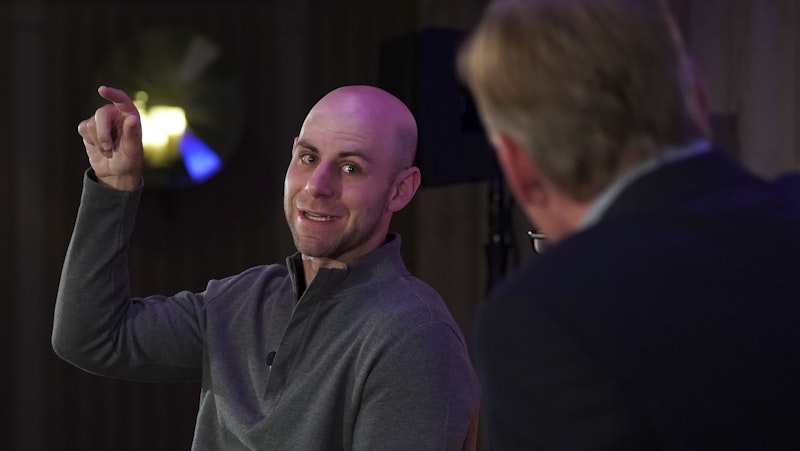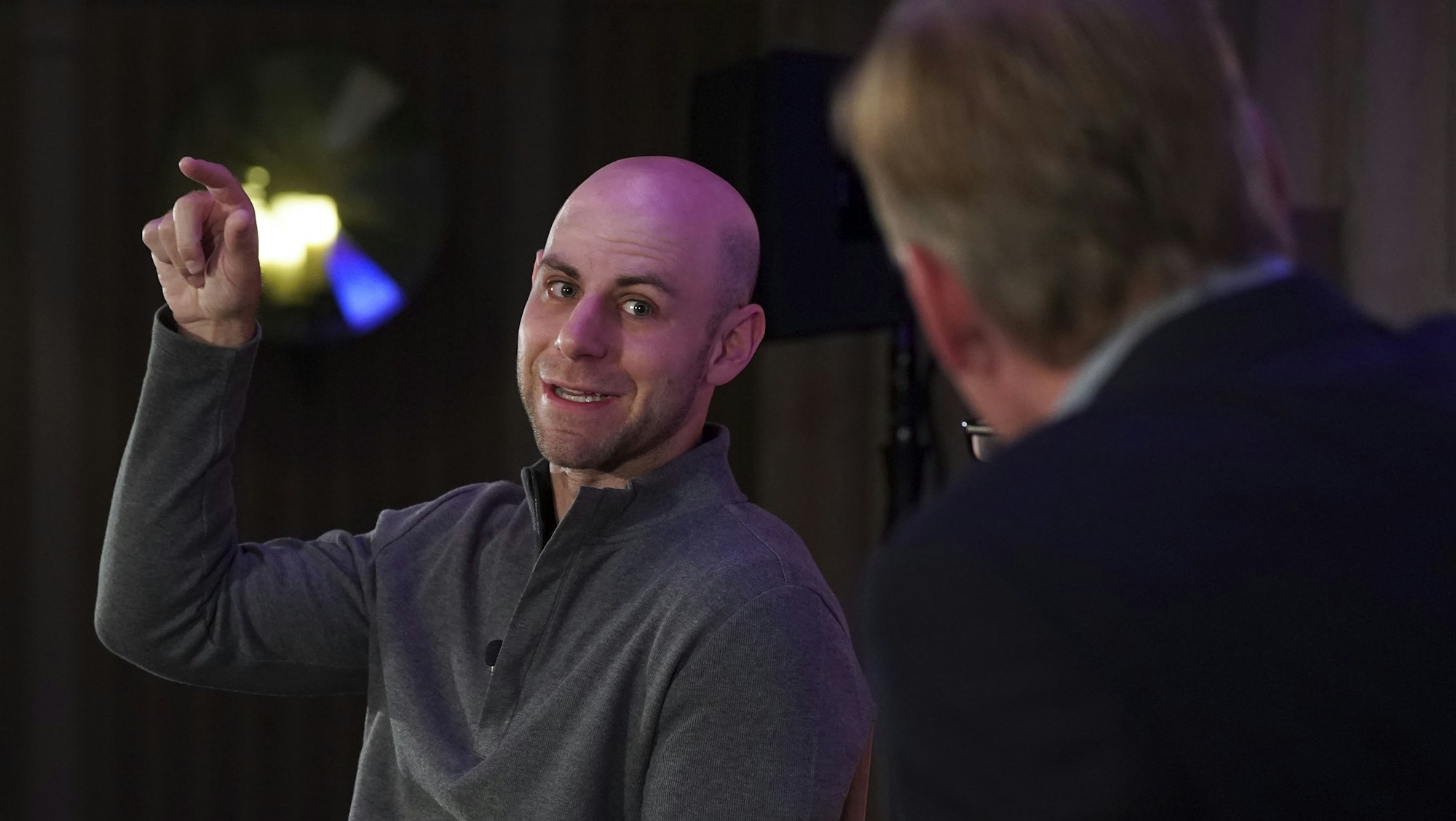
Humanization, Dehumanization and Other Things Psychologists Do
Setup
How can we overcome our own biases and stop seeing the worst in others? Psychologists and bestselling authors Jennifer Eberhardt and Adam Grant, along with CBS News’ John Dickerson, use cutting-edge research and examples from their own lives to discuss whether there’s hope for our schools and workplaces to bring out the better angels of our nature.
What’s the big deal about bias?
As a species, we are categorizers, and categories help us bring coherence to the world, explains Stanford psychology professor Jennifer Eberhardt. But as we’ve formed categories for humans and put different social groups into those categories, it opens the way for bias. Implicit biases are the beliefs and feelings we have about social groups that can influence our decision making and our actions, says Eberhardt, even when we’re not aware of it.
Did You Know?
A consequence of bias is that it makes it easier to dehumanize others and strip them of their individuality. Though the groups that are dehumanized and the ways in which they are dehumanized differ across time and location, the fact of dehumanization is universal, says Eberhardt.
Organizations like the ease of online training, but it’s not very effective
The major issue with online bias trainings is that they haven’t been systematically evaluated, and there aren’t agreed-upon metrics for evaluation, says Jennifer Eberhardt. Complicating things further, organizations have a range of motives and incentives for having trainings, and often these trainings don’t reach the people who need them the most. Watch Adam Grant, an organizational psychologist, explain a study he helped conduct to test the efficacy of different types of bias training in a large multinational company:
How can bias trainings be more helpful? We need more research on the conditions under which we act on our biases, says Eberhardt.
Why “colorblindness” just doesn’t work
Research shows that by the age of 10 years old, children have already received the message that you’re not supposed to ever mention someone’s race. It’s the colorblind message, says Jennifer Eberhardt, and it often serves to undermine and further marginalize the experiences of people of color.
Colorblindness simply doesn’t allow for accountability over our biases. And this is key, because “if we’re aware of the situations in which our biases are activated,” Eberhardt says, “we can shut it down.”
Is there anything we can do to shut down bias?
If you met someone from your hometown while you were in your hometown, you wouldn’t necessarily care or feel any affinity towards them. But if you met that same person while you were traveling in a foreign country, you would be instant best friends. This is the example Adam Grant uses when describing rare similarities, where you go beyond superficial similarities to find more meaningful connections with others. Rare similarities tend to overcome bias, says Grant.
Big IdeaI don’t think you have to feel other people’s feelings to care about their feelings.Adam Grant
There’s a sense that bias is individual, but bias really comes from our social environment, says Jennifer Eberhardt, and our institutions play a huge role in determining what those environments are. It’s not enough for organizations to just describe the problem, like having very few women and people of color in leadership roles, for example. “You need to reject the problem,” Adam Grant urges. “And say this is not okay. This is not acceptable.”
Learn More
Additional Information
Resources
Biased: Uncovering the Secret Prejudice that Shapes What We See, Think, and Do
WorkLife with Adam Grant: A TED original podcast
Explore More
Society


Young people in America are struggling. The causes are varied and may not be entirely clear, but the results are unfortunately unmistakable. Many of our youth feel lonely, iso...


Many more Americans are struggling to survive and make ends meet than is typically portrayed in the media and public policy debates. And when poverty is depicted, harmful and...

Friends, partners, children, families, coworkers — these connections profoundly shape our lives, and even in the best of times, navigating them takes real work. It also means...

New York Times columnist and bestselling author David Brooks is known for bringing his thoughtful reflections on politics and culture, but at this year’s Aspen Ideas Festival,...

Jump in by watching our 15 most popular talks of all time. From black holes to jazz and civil rights to psychology hacks, we've collected the talks that remain audience favori...


America’s “second founding” came on the heels of the Civil War, when the architects of the 13th, 14th and 15th amendments thought long and hard about how to enshrine civil rig...

Finding the national and global headlines understandably bleak lately? Whether you need mental distraction or stimulation, engross yourself in compelling topics and get a gli...

Today's kids are coming of age against a backdrop of political, social, technological and economic upheaval. While these circumstances are shaping a precocious generation that...


Hope seems like a simple concept, but the feeling can be difficult to hold onto. And when times are difficult and chaos swirls around us, it’s more important than ever. How do...

Advocates, healthcare providers, legislators, researchers, and venture capitalists are bringing the unique health needs of women to light – from vigorous policy debates on iss...

Ethical dilemmas, stakeholder pressure, building trust — leading organizations requires wisdom and stamina from the top. Who wouldn’t want some advice?


It’s been decades since the United States has updated its immigration policies in any sort of comprehensive way, and the problems and suffering at the southern border have per...

What makes us happy — really? How can we raise resilient and empathetic children? What does it mean to be truly connected in our increasingly digital world? Can we re-instill...


Whether they publicly tout it or not, U.S. technology companies play a powerful role in politics, cultural issues and the way we live. Founder and investor Peter Thiel is one...

Our need for human connection is profound and deep. Yet, today, one in two adults are living with measurable levels of loneliness – and the numbers are even higher among young...

The 2024 presidential election is only months away, and the past few weeks alone have brought shocking headlines that change the political ground we stand on — an attempted a...


Sizable electorates around the world are flocking to populist candidates who promise power, domination and a return to better times. The global experiment in liberalism seems...


Conflict and suffering can bring out the worst in people, but it can also bring out the best. This is one of the lessons New York Times columnist Nicholas Kristof has learned...


The federal right to abortions in the United States has been overturned, access to contraception and IVF services are threatened in many states, and the gender wage gap persis...


The Supreme Court has issued another series of controversial and consequential decisions this term, fueling discussion on the current state of the judicial branch. Recent poll...













